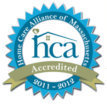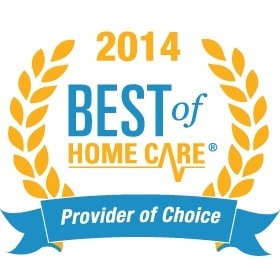Licensed Practical Nurses
Exceptional Care for Exceptional People
Exceptional care with exceptional service describes us best. When you select 24 Hours Care, you will be assisted by a seasoned, compassionate care manager that understands your comprehensive needs. Starting with a detailed assessment and consultation, a customized plan of care is developed. Our holistic approach and highly individualized services ensure an unparalleled care experience.
24 Hours Care caregivers are carefully selected for each client and are supervised by a nurse management team available 24/7. In addition, we continually integrate your physician into care progress with ongoing communication. Whether your needs are temporary or on an ongoing basis, we are committed to the highest quality of care and attention to detail.
With our services comes the peace of mind knowing that staff employees are thoroughly screened, background checked and credentialed. Each employee is interviewed at length by a member of the senior management team. In addition, 24 Hours Care carries full general and professional liability coverage, worker’s compensation insurance and assumes liability for all payroll taxes.
To learn more about our services, please call our nurse case manager for a complimentary
consultation at 617-792-2200
“24 Hours Care has been a first rate provider and Anne Marie a god-send” –Joe B., Client Son, Mattapoisett MA
“Mom can be compulsive and hard to please but within ten minutes Annette set her at ease” – Sara W., Client Daughter, Brookline MA
“Working as a social worker in a fast paced acute care setting it is vital that I work with an organization that I trust will take over the physical and emotional care of these patients and families and be able to do this in a timely manner.. ..most important is that I trust that they will provide top notch caregivers and provide seamless coverage. I have worked with 24 Hours Care and without fail they provided all of the above”. – Pam R., LICSW, Social Services Oncology
PRIVATE CARE SERVICES
When you select 24 Hours Care you’ll be able to choose from a wide range of services tailored to meet your needs.
PRIVATE NURSING SERVICES
Experienced, compassionate nurses offering personal attention while hospitalized, recovering at home, in a hotel, or while traveling.
- Post surgical aftercare
- Clinically complex care
- Physical and occupational therapy
- 24/7 end of life care
- Rehabilitation at home
CAREGIVER SERVICES
We customize independent living solutions enabling our clients to remain safely at home or in assisted living enjoying their preferred lifestyle while medically supervised.
- Hourly or live-in assistance
- Transportation and errand services
- Temporary or long term care
- Dementia care
- Meal preparation and housekeeping
ANCILLARY & TRAVEL SERVICES
Our available ancillary and concierge services attend to your every lifestyle need, making for a worry free experience for you and your family.
- Transportation and medical escorts
- Travel nursing – vacations and business trips
- Placement consultation & assistance
- Geriatric Care Management
MEDICAL TOURISTS
24 Hours Care also serves the unique needs of domestic and international patients traveling for medical care.
ENHANCING THE QUALITY OF LIFE FOR ELDERS AND THEIR FAMILIES
As healthcare professionals we understand how overwhelming it can be for families and individuals trying to cope with aging and health related issues. Often times, families find themselves thrust into an elder’s health affairs that are complex, multi-faceted and emotionally draining.
Our comprehensive geriatric care management services focus on the entire health, well being and lifestyle of elders and their families. Through our interdisciplinary team approach we develop an individualized plan of services whether needs are simple or complex.
With one phone call to 24 Hours Care, you engage the services of geriatric care professionals including social workers, nurses, care coordinators and geriatricians that can respond to a variety of challenges, from the mundane to clinically complex issues that elders and their families face on a daily basis:
- Coordination and management of daily tasks such as transportation, home maintenance, shopping, etc.
- Placement assistance and decision support
- Ensuring elder safety, well being and socialization
- Coordination and integration of care when multiple physicians are involved
- Management of complex chronic conditions
- Medication Management
- The creation of a “Medical Home” where an elder can receive disease appropriate care
Through our comprehensive approach and direct care capabilities, we help to manage the challenges associated with aging for the best possible quality of life, allowing families to focus on relationships.
To learn more about our services, please call our nurse case manager for a complimentary
consultation at 617-792-2200.
24 Hours Care recognizes the importance of offering services to the elderly and those in need, with sensitivity and compassion. We provide professional care and are committed to a holistic approach in responding to the needs of senior citizens. We understand and celebrate the role of seniors during their prime. Now it is our turn to serve our seniors, utilizing our six years of professional experience. 24 Hours Care is dedicated to this goal: to assist the elderly in living a normal and comfortable life by providing appropriate and friendly care with attention to seniors’ safety and healthy living. Included in 24 Hours Care‘s services are home care, companion care, hospice care and nurse’s aides. We provide quality personal care, hygiene maintenance (laundry, light housekeeping), meal preparation, and reliable transportation for doctors appointments, shopping, and social activities.
24 Hours Care is devoted to achieving its primary goal: personal satisfaction. We guarantee our quality of services.
Principles of Patient Examination and Evaluation
- Initiate the process before any treatment; reexamine and reevaluate the patient frequently.
- Establish a baseline of the patient’s condition and functional status.
- Provide data and information to develop a clinical diagnosis and prognosis; develop the treatment plan and program; measure the patient’s progress and response to treatment; and determine the need to revise or modify the plan of care, goals, or functional outcomes.
- Measure the patient’s attainment of goals or functional outcomes.
- Provide data and information for use by other persons
Patient Management Process
- Examine the patient’s medical record, including physician’s orders, history and physical, special diagnostic tests, nursing notes.
- Examine the patient, gather subjective and objective information and data, and perform tests and measures to determine the patient’s current condition and functional abilities.
- Evaluate the information and data to make clinical judgments and decisions.
- Postulate a clinical diagnosis and prognosis based on the results of the evaluation.
- Form a plan of care based on the prognosis.
- Identify and select the intervention activities and techniques projected to be most effective to attain functional outcomes.
- Establish the sequence, frequency, and duration of the plan.
- Consider termination of treatment, including the development of a home treatment program if it becomes necessary.
- Implement the plan.
- Apply techniques, activities, or procedures selected to accomplish functional outcomes.
- Revise or modify the plan depending on the patient’s response or progress.
- Evaluate and document the patient’s response frequently; determine progress toward functional outcomes.
- Terminate the plan.
- Evaluate the patient’s functional activities to determine the need for further treatment elsewhere.
- If appropriate, instruct family members or home caregiver and provide time for them to practice.
- Provide a written home program and place a copy in the patient’s medical record; document the patient’s functional outcomes; document the date and time for reevaluation if necessary.
CULTURE:
The shared values, norms, traditions, customs, art, history, folklore, and Institutions of a group of people CULTURAL COMPETENCE A set of academic and interpersonal skills that allow individuals to increase their understanding and appreciation of cultural differences and similarities within, among, and between groups. This requires a willingness and ability to draw on knowledgeable persons of and from the community in developing focused interventions, communications, and other supports.
CULTURAL DIVERSITY Differences in race, ethnicity, language, nationality, or religion among various groups within a community, organization, or nation. A city is said to be culturally diverse if its residents include members of different groups.
CULTURAL SENSITIVITY An awareness of the nuances of one’s own and other cultures
CULTURALLY APPROPRIATE Demonstrating both (1) sensitivity to cultural differences and similarities and (2) effectiveness in using cultural symbols to communicate
ETHNIC Belonging to a common group often linked by race, nationality, and language with a common cultural heritage or derivation
RACE A socially defined population that is derived from distinguishable physical characteristics that are genetically transmitted
Guidelines for Communicating with Persons with Disabilities
- Interact directly with the person with the disability.
- Greet the person with respect as you would a person without a disability; shake hands or forearm, or use your left hand as appropriate.
- Identify yourself and other persons in a group to the person who is visually impaired.
- Stoop or squat to communicate with a person in a wheelchair; position yourself in front and at eye level.
- Avoid leaning or sitting on a person’s wheelchair; use care when handling assistive aids.
- Avoid statements, gestures, or actions that patronize; interact as you would with persons who do not have a disability.
- Tactilely or visually cue the person who is hearing impaired to indicate your presence.
- Be patient and listen carefully when interacting with a person who has difficulty speaking; use questions that require brief responses.
- Determine whether the person desires assistance before assisting him or her; wait for instructions.
Barriers to Effective Communication
- Distance between the sender and receiver; excessive distance decreases effectiveness.
- Noise and environmental confusion interfere with and may distort the message.
- Inability of the receiver to comprehend the message
- Inability of the receiver to interpret or understand technical, medical, and professional terms, language, or abbreviations
- Inadequate amount of feedback between the receiver and sender
- Complex messages may be difficult to interpret and comprehend.
- Sender and receiver may interpret the message differently.
- Cultural, gender, or age differences between the sender and receiver may affect the interpretation or comprehension of the message.
- Illegible writing affects the accuracy and comprehension of the message.
Safety Recommendations
- Perform hand hygiene before and after treating each patient to reduce cross-contamination and transmission of disease. This is the single most important activity to prevent the spread of infection.
- Maintain sufficient space to maneuver equipment or perform a task. Store equipment that is not in use so it will not interfere with patient care. Position a patient to avoid the risk of being struck by passing personnel or equipment.
- Do not perform transfers or ambulation in an area where your view is obstructed, such as near a door or the corner of a hallway, or where space is inadequate or too congested for the activity.
- Routinely evaluate equipment to be certain it functions properly; establish a maintenance program for each item.
- Position equipment, furniture, and assistive aids so the items are stable, secure, and accessible when they are used. Remove them when they are not in use so they do not interfere with patient and caregiver movements.
- Keep the floor clear of electrical cords, litter, loose rugs or floor mats, water, dirt, and other similar hazards.
- Do not leave patients unattended, especially if they are compromised physiologically or mentally.
- Protect the patient with safety straps, bed rails, or similar items when they are not closely attended, according to established agency, regulatory body, and state or federal restrictions and guidelines.
- Obtain the equipment and supplies needed, and prepare the treatment area before the patient arrives to avoid the need to leave the patient unattended.
- Be certain the personnel who provide patient care are trained, qualified, and competent in their assigned duties.
- Avoid storing potentially hazardous equipment or materials in a location where they are hidden from view or where there is a risk of a patient obtaining them. Do not store chemicals or heavy objects on a shelf above shoulder level. Clearly label the contents and weight of boxes or other containers.
Home Program Components
- Determine the need or value for the patient to continue treatment after the formal treatment concludes.
- Determine the environment and assistance available at home (family member), health club (health care practitioner), school (friend), or other.
- Prepare the program before termination of the scheduled treatment sessions.
- Instruct and supervise the patient and the assistant as they practice the program activities before termination of scheduled treatment sessions.
- Provide a typed or printed program with specific instructions, which is individualized for each patient.
- Outline and describe the activities, exercises, and positions to be used; provide diagrams as necessary.
- State goals and expected results, as necessary.
- Provide objective indicators of performance (i.e., repetitions, distance, and time) and the frequency and duration of the program.
- Provide indicators of successful completion, fulfillment, or accomplishment of goals, functional outcomes, or activities.
- Indicate equipment and supplies that will be needed.
- Indicate precautions or contraindications associated with the exercises or activities.
- Provide date, time, and location of scheduled reevaluation or appointment, if appropriate or necessary.
- Inform the patient when or whether to terminate the program.
- Provide caregiver’s name, telephone number, and address.
- Document the preparation and assignment of the home program, and maintain a copy in the medical record or patient’s file. Contact the patient periodically to learn about problems, progress, or change in condition.
Encourages all employees to protect themselves and their patients from injury by:
- Utilizing gait belts unless contraindicated with a resident’s condition.
- Working together with co-workers as a team.
- Reporting equipment that is worn, frayed or broken.
- Never use equipment that is not in good working condition.
- Always get assistance when repositioning a patient in bed.
- Postpone giving care to agitated, combative patients until you have reported this to the nurse for guidance and interventions.
- Use mechanical lifts for heavy patients—both for lifting and repositioning.
- Seek out information and help whenever you are unsure of a patient’s physical capabilities.
- Lock beds and wheelchairs before transfers.
- Adjust height of bed when doing patient care and transfers.
- Push in all bed cranks when finished with use.
- Wipe up all spills immediately.
- Coordinate transfers/lifts with partner by counting 1-2-3 (lift).
- Encourage patients to assist with transfers and repositioning.
- Make sure patients have on proper footwear for transfer and ambulation.
- Ambulate patients with adaptive equipment recommended by P.T..
- Check all walkers and canes for worn tips.
- Enlist patient’s help and cooperation by explaining procedure or activity.
GOAL STATEMENTS
- General Concepts
- Objective terms are used.
- Measurable outcomes are stated.
- Realistic, attainable outcomes are identified.
- Statements are oriented to the person involved, performance expected, time frame anticipated, functional outcome expected, and equipment or assistive aids needed.
Short-Term (Interim) Goals
- Preparatory component of long-term goal
- Lead-in activity for long-term goal
- Sequential activities that produce cumulative effect
- Support and promote functional outcome
Long-Term (Terminal) Goal
- Evolves from short-term goals
- Describes maximal performance or desired outcome
- Describes functional outcome as a necessary component
- Should be revised or modified based on the patient’s progress and performance
Home Program Components
- Determine the need or value for the patient to continue treatment after the formal treatment concludes.
- Determine the environment and assistance available at home (family member), health club (health care practitioner), school (friend), or other.
- Prepare the program before termination of the scheduled treatment sessions.
- Instruct and supervise the patient and the assistant as they practice the program activities before termination of scheduled treatment sessions.
- Provide a typed or printed program with specific instructions, which is individualized for each patient.
- Outline and describe the activities, exercises, and positions to be used; provide diagrams as necessary.
- State goals and expected results, as necessary.
- Provide objective indicators of performance (i.e., repetitions, distance, and time) and the frequency and duration of the program.
- Provide indicators of successful completion, fulfillment, or accomplishment of goals, functional outcomes, or activities.
- Indicate equipment and supplies that will be needed.
- Indicate precautions or contraindications associated with the exercises or activities.
- Provide date, time, and location of scheduled reevaluation or appointment, if appropriate or necessary.
- Inform the patient when or whether to terminate the program.
- Provide caregiver’s name, telephone number, and address.
- Document the preparation and assignment of the home program, and maintain a copy in the medical record or patient’s file. Contact the patient periodically to learn about problems, progress, or change in condition.


















